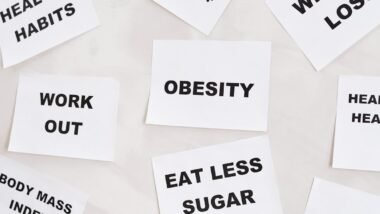Incorporating Exercise
Engaging in regular physical activity is crucial for achieving weight loss goals. A combination of cardiovascular exercises and strength training can enhance calorie burning and build lean muscle mass. Aim for at least 150 minutes of moderate-intensity cardio each week, supplemented with two or more days of strength training targeting major muscle groups. Walking, running, cycling, or swimming are excellent cardio options, while bodyweight exercises, resistance bands, and free weights can effectively build strength.
Consider incorporating both high-intensity interval training (HIIT) and steady-state exercises into your routine. HIIT can maximize calorie burn in shorter periods, making workouts more efficient. Meanwhile, steady-state exercises allow for longer workouts that can improve endurance. Finding activities you enjoy will help sustain motivation and facilitate consistency in your exercise regimen.
Hop over here to discover more.
Types of Workouts for Optimal Results
To achieve weight loss goals effectively, a balanced combination of cardiovascular and strength training exercises is crucial. Cardiovascular workouts, such as running, cycling, or swimming, elevate the heart rate and burn calories rapidly. Incorporating strength training exercises, like weight lifting or bodyweight workouts, can build muscle mass. Muscle burns more calories at rest, enhancing overall metabolism and contributing to sustainable weight loss.
High-Intensity Interval Training (HIIT) is another effective approach. This method involves alternating between short bursts of intense activity and periods of rest or lower intensity. HIIT not only maximizes calorie burn during workouts but also continues to elevate metabolism post-exercise, leading to additional fat loss. Ultimately, adhering to a well-rounded exercise routine that includes different workout types can optimize results and maintain motivation throughout the weight loss journey.
Managing Cravings
Cravings can be challenging, but understanding their triggers is essential for managing them effectively. Many cravings arise from emotional triggers, boredom, or environmental cues such as advertisements or the presence of certain foods. Identifying these triggers allows you to develop alternatives. Instead of reaching for snacks, consider engaging in activities that occupy your mind or body. A quick walk or a short workout can redirect your focus and diminish your desire for unhealthy foods.
Another important strategy involves keeping healthier options readily available. Stock your kitchen with easy-to-access fruits, vegetables, or whole grains. Preparing snacks in advance can help eliminate the temptation to reach for convenience foods that are often high in sugar and unhealthy fats. When hunger strikes, having nutritious choices on hand makes it easier to stick to your goals without feeling deprived. This proactive approach can significantly reduce the frequency and intensity of cravings, ultimately supporting your weight loss journey.
Strategies to Overcome Temptation
Identifying triggers is essential for successfully managing cravings. Keeping a journal can help pinpoint situations or emotions that lead to unwanted snacking. Once you recognize these patterns, finding alternative activities can divert your mind and energy. Engaging in a hobby, going for a walk, or even practicing deep breathing exercises can replace the urge to eat when it strikes.
Another effective technique involves planning meals and snacks ahead of time. When you have healthy options readily available, it becomes easier to resist the temptation of unhealthy choices. Preparing food in advance can also reduce impulsive eating, as it leaves less room for decision-making during moments of weakness. Staying hydrated is equally important; drinking water regularly can often curb hunger and help maintain focus on your weight loss goals.
Monitoring Portion Sizes
One crucial aspect of successful weight loss involves being mindful of the quantity of food consumed. Understanding serving sizes can significantly impact your overall caloric intake. Familiarizing yourself with standard measurements can aid in controlling portions. Utilizing smaller plates and bowls can create a visual cue that supports eating less. This simple change in dishware may lead to consuming fewer calories without feeling deprived.
Tracking your meals through writing or using a food diary can enhance awareness of portion sizes. Recording what you eat encourages accountability and may highlight any unintentional overeating. Measuring cups or a food scale can also provide precise portions, ensuring that your servings align with your weight loss goals. Over time, this practice can help foster a more intuitive understanding of appropriate portion sizes.
Tips for Serving Correctly
Portion sizes can significantly impact weight loss efforts. Using smaller plates and bowls can help visually trick the brain into thinking one is eating more. When meals are served in larger dishes, it often leads to overeating without realizing it. Additionally, measuring out servings instead of relying on guesswork ensures more accurate portion control. Following recommended serving sizes on packaging can provide clarity and prevent excessive consumption.
Mindful eating practices can also aid in managing portion sizes effectively. Taking time to savor each bite helps recognize hunger cues and fullness signals. Eating slowly allows the body to process food better, promoting satisfaction with smaller amounts. Listening to these signals can lead to better choices and deter the impulse to overeat. Engaging in meals without distractions, like screens, can enhance awareness of what is being consumed, further supporting weight loss goals.
FAQS
Is it safe to lose 10 lbs in 2 weeks?
Losing 10 lbs in 2 weeks can be risky for some individuals, especially if it involves extreme dieting or excessive exercise. It’s important to consult with a healthcare professional before starting any weight loss program.
What types of workouts are most effective for losing weight quickly?
High-intensity interval training (HIIT), circuit training, and strength training are effective for quick weight loss. These workouts help burn calories and increase muscle mass, which can aid in metabolism.
How can I manage cravings while trying to lose weight?
Managing cravings can be achieved by staying hydrated, eating balanced meals with plenty of protein and fiber, and practicing mindful eating. Also, finding healthy alternatives to your cravings can help.
What are some tips for portion control?
Using smaller plates, measuring serving sizes, and being mindful of your hunger cues can help with portion control. Additionally, avoiding eating straight from the package can prevent overeating.
Can I still enjoy my favorite foods while trying to lose weight?
Yes, you can still enjoy your favorite foods by practicing moderation. Allowing yourself occasional treats can help prevent feelings of deprivation and make it easier to stick to your weight loss goals.
Related Links
quick weight loss tips 2 weeks
How to lose weight very fast in 2 weeks?
How can I slim my body in 7 days?


